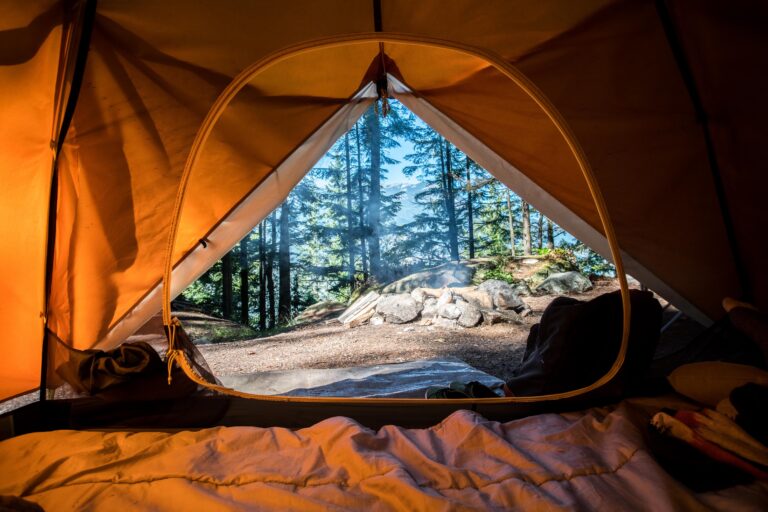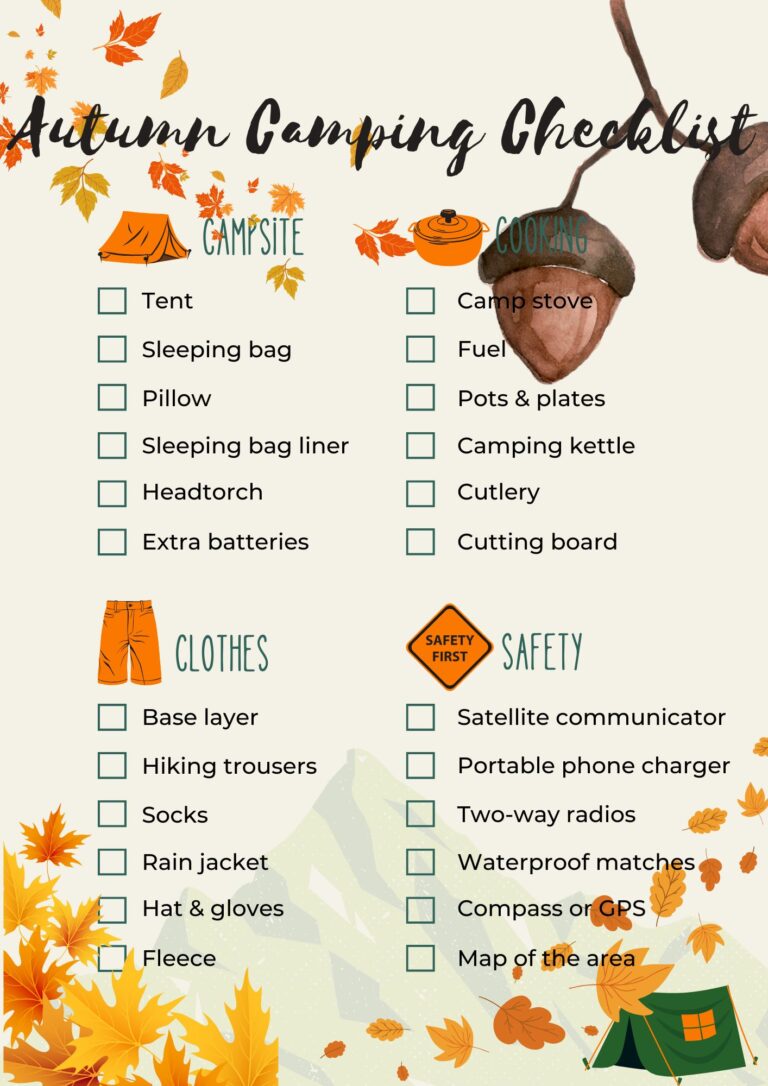The Best Guide to AI Camping Weather Prediction Tools in 2025
Are you searching for the best AI camping weather prediction tools? Read this blog to find out everything you need before your next adventure.

Last Updated on 3 May 2025
Nothing ruins a camping trip faster than unexpected severe weather! I’ve had my fair share of less-than-desirable weather conditions, and let me tell you, none of them were pleasant!
According to Hipcamp, a campsite booking company, around a third of all cancellations were down to bad weather. Fortunately, artificial intelligence has already transformed weather forecasting for outdoor enthusiasts!
Currently, available AI camping weather prediction tools are combining machine learning algorithms with traditional meteorological data to offer campers unprecedented accuracy at both regional and hyper-local levels.
From predicting sudden mountain thunderstorms to alerting you about dangerous overnight temperature drops, these technologies are making camping safer and more enjoyable. This article explores the AI camping weather prediction tools that actually exist today, how they work, and how real campers are using them to enhance their outdoor experiences.
Let’s read on to find out more about AI camping weather prediction tools and how these remote camping weather apps might help you on your next adventure.

Read more: Best AI Camping Gear for 2025: The Complete Guide
Read more: 7 Best AI Camping Gadgets: The Ultimate Buyer’s Guide in 2025
Current AI Camping Weather Prediction Technology for Campers
I’ve been an avid camper for about 15 years, and let me tell you, the evolution of current AI weather apps has been nothing short of amazing. Back in the day, I’d just glance at the local forecast and hope for the best. There were a fair few times when I had slightly damp sleeping bags and hurriedly put together tents when the weather turned for the worst as we got to camp!
These days, I religiously check multiple AI-powered weather apps that provide real-time weather updates before any camping trip. The IBM GRAF system, or the Global High-Resolution Atmospheric Forecasting System, has become one of my go-to resources. What makes GRAF special is how it updates hourly and can predict weather conditions down to a 3-kilometre resolution.
One thing to point out with the GRAF system is that you don’t actually use it directly, rather you access it through weather channels or meteorologists who use it to generate weather forecasts.
The National Oceanic and Atmospheric Administration’s (NOAA’s) High-Resolution Rapid Refresh (HRRR) model is another game-changer for us outdoor enthusiasts. The NOAA HRRR model provides detailed forecasts that update hourly, which is crucial when you’re already at your campsite trying to decide whether to pack up early.
Again, though, you wouldn’t use this feature directly; instead you access it through a weather forecasting platform or app like Windy.com prediction models.

Physics-based models like the European Centre for Medium-Range Weather Forecasts (ECMWF) incorporate actual atmospheric physics equations into their AI systems. These tend to be more accurate for longer-range forecasts, which is super helpful when planning trips weeks in advance. I learned this distinction the hard way after trusting a purely statistical model for a week-long backcountry trip and ending up with weather completely different from what was predicted after day three.
One thing that’s blown my mind is how our smartphones have become weather stations themselves. Many modern weather apps now utilise barometric sensors in phones to supplement traditional data collection methods. My weather app actually prompts me to share pressure readings when I’m in remote areas to help improve forecasts for other users.
The integration of machine learning into weather apps has been a total game-changer. Apps like Dark Sky (before Apple acquired it) and WeatherBug use machine learning weather forecasting algorithms to refine precipitation predictions. They also give you those minute-by-minute “rain starting in 10 minutes” alerts, which definitely come in handy. These have saved countless BBQs and hiking excursions for my family.
Despite all these advances, I still pack extra tarps and rain gear. No AI is perfect yet, and Mother Nature always seems to have a few surprises up her sleeve. But compared to the “guess and pray” method I used in my early camping days, today’s AI camping weather prediction tech makes outdoor adventures significantly safer and more enjoyable.
Read more: AI Camping Navigation: The Best Guide You Need in 2025
Read more: AI Camping Apps in 2025: The Best Info is All Here to Read
Leading AI-Enhanced Weather Apps for Camping Available Today
I’ve been through my fair share of camping disasters thanks to unexpected weather. Through years of trial and error (and more than a few drenched tents), I’ve narrowed down which satellite weather systems and AI-powered weather apps actually deliver.
Dark Sky was my introduction to just how precise AI camping weather prediction tools could get. Their hyperlocal precipitation forecasts are eerily accurate, especially in areas with good data coverage. I remember sitting at a campsite in Wales watching the app countdown to rainfall – “starting in eight minutes” – and sure enough, the first drops hit my tent right on schedule.
The app uses machine learning to analyse radar data and crowd-sourced information from users’ barometric pressure sensors to refine its predictions. Though Apple acquired Dark Sky, its technology lives on in the Apple Weather app, which has become my default quick-check before day hikes.
Weather Underground’s BestForecast system has saved my camping trips more times than I can count. What makes their AI approach unique is how it combines traditional forecast models with data from over 250,000 personal weather stations. During a trip to the Dolomites, Weather Underground accurately predicted a small window of clearing between storm systems that other apps missed completely.

The AccuWeather MinuteCast app has become my go-to for planning outdoor cooking during camping trips. The app’s machine learning components analyse satellite, radar, and ground station data to provide minute-by-minute precipitation forecasts for the next two hours. It’s not perfect – I’ve still had to scramble to cover my camp kitchen once or twice – but it’s dramatically more reliable than traditional forecasts.
For serious backpacking expeditions, Windy.com has been a game-changer. The app integrates multiple AI-enhanced prediction models including ECMWF, Global Forecast System (GFS), and the Icosahedral Nonhydrostatic model (ICON), allowing you to compare different forecasts side-by-side. This might sound like overkill, but when you’re planning a multi-day backcountry trip, these AI camping weather prediction tools provide different perspectives that can be invaluable.
GAIA GPS weather features has evolved beyond just navigation to incorporate some impressive weather prediction algorithms specifically designed for outdoor enthusiasts. Their integration of weather data with topographical maps helps identify how conditions might vary based on elevation and terrain.
This has been invaluable for mountain camping where conditions can change dramatically over short distances. During a trip in Wales last year, GAIA accurately predicted colder temperatures and stronger winds at our planned campsite compared to the broader regional forecast, allowing us to pack appropriate gear.
Read more: The 7 Best AI Camping Watches Available Now in 2025
Read more: A Complete Guide to Smart Camping Devices to Use in 2025
How Current AI Camping Weather Prediction Works?
I’ve been fascinated with weather prediction ever since a disastrous camping trip where my “waterproof” tent turned into a kiddie pool during what was supposed to be a clear night. After that soggy experience, I headfirst into understanding how modern AI camping weather prediction actually works. What I discovered changed how I plan every outdoor adventure.
The magic behind accurate campsite forecasts starts with something called downscaling. Essentially, traditional weather models create predictions for massive grid squares that can be 10-20 kilometres wide. That’s basically useless when you’re trying to figure out if your exact campsite will get rained on! Modern AI systems take those broad predictions and refine them down to hyper-specific locations through a process that honestly blew my mind when I first learned about it.
I remember talking to a meteorologist friend who explained that downscaling uses machine learning algorithms to analyse how regional weather patterns typically affect specific locations.
Topographical data plays a huge role in making these micro-predictions accurate. Current systems incorporate incredibly detailed elevation models, slope angles, and even vegetation coverage to predict how weather will behave at your specific location. I learned this the hard way during a mountain camping trip where the forecast for the nearby town was completely different from what we experienced at our higher-elevation campsite.

What really surprised me was discovering how these AI systems use historical weather patterns. They’re constantly analysing decades of weather data for your specific location, identifying patterns like “when wind comes from the northeast at this time of year with these conditions, this valley typically experiences fog.” This pattern recognition gets incredibly granular and improves over time.
One case study that really demonstrated the power of this technology happened during my trip to Cornwall. Traditional forecasts predicted uniform conditions, but our AI-enhanced app correctly predicted that the northern campsites would experience significantly different temperatures and precipitation than the southern ones due to a weather system interacting with the varied terrain. This level of detail simply wasn’t possible with traditional forecasting methods.
Despite these amazing advances, I’ve learned there’s still no substitute for understanding the weather yourself. I’ve found the best approach is combining AI camping weather predictions with some basic meteorological knowledge and always having a backup plan.
Read more: Top Tips for Your First Solo Camping Trip in 2025
Read more: The Ultimate Camping List You Need to Know in 2025
Essential Features in Today’s AI Camping Weather Prediction Tools
I’ve been camping since I was a kid, but it wasn’t until I started seriously leveraging AI camping weather prediction tools that I truly felt confident planning outdoor adventures.
Severe weather push notifications have become my absolute must-have feature. The best AI camping weather prediction systems don’t just tell you bad weather is coming; they analyse your specific location and only alert you when it truly matters. I remember setting up camp in Snowdon when my phone pinged with a flash flood warning. The skies were clear, but the AI had detected heavy rainfall upstream that would affect our riverside campsite within hours. We relocated to higher ground, and sure enough, the water rose dramatically overnight.
Precipitation timing technology has got eerily accurate thanks to pattern recognition algorithms. Instead of just saying “60% chance of rain,” modern AI tools tell you “Rain beginning at approximately 2:15 PM, lasting 40 minutes.” During a family camping trip last summer, we planned our hike around a predicted 90-minute rain window, and the storm arrived within 10 minutes of the forecast time. The app was analysing radar data, wind patterns, and historical precipitation behaviour for that specific mountain range to make its prediction.

Wind forecasting has saved my tent on multiple occasions. Today’s AI tools provide hourly wind direction and speed predictions that account for local terrain features. I’ve learned the hard way that general regional wind forecasts are nearly useless in mountains where wind behaves in complex ways.
Temperature forecasting has become sophisticated enough to account for both elevation and tree cover. This might sound like a small thing, but it makes a huge difference when packing gear. I’ve camped at sites where temperatures dropped 15 degrees below the forecast for the nearest town due to elevation differences. Now my go-to app actually shows me how temperatures will vary throughout the day at my precise location, accounting for sun exposure, tree cover, and elevation.
Despite all these advances, I still follow the old camping wisdom of expecting conditions to change and being prepared for anything. The best AI weather tools have become invaluable planning partners, but they complement rather than replace traditional weather knowledge and preparedness. They’ve just given me the confidence to camp more often and in more diverse conditions than I would have risked before!
Read more: The 7 Best Family Tents for 2025
Read more: How to Waterproof a Tent in 2025: Top Tips to Staying Dry
Real Camper Experiences with AI Weather Prediction
The adoption rates of AI weather prediction among backcountry users have grown significantly in recent years. From what I’ve observed in online forums and camping groups, more and more outdoor enthusiasts are incorporating these camping trip planning tools into their planning process. My theory is that once you’ve been caught unprepared in dangerous weather, you’ll embrace any technology that helps avoid a repeat experience.
I’ve had conversations with several expedition leaders about their experiences with these tools, and their insights were eye-opening. One leader who guides trips all over the UK mentioned she now consults multiple AI weather systems before planning multi-day expeditions. “The precipitation timing predictions have become so accurate that we can plan river crossings and summit attempts with confidence that simply wasn’t possible before,” she explained. Another guide told me how the micro-climate predictions had allowed him to select campsites that stayed significantly warmer than surrounding areas during a late autumn trip.
My own experiences provide a good comparison of trips with and without AI weather planning. Two trips to the same lake, one year apart: the first trip relied on traditional forecasting and ended with a night curled up in my tent as unexpected storms rolled through. The second trip, planned with AI weather tools, allowed us to schedule our summit day during a perfect weather window that the general forecast hadn’t identified. The difference was literally night and day.

What I’ve noticed most from talking with other campers is how these tools have expanded people’s comfort zones. Experienced backpackers report feeling confident exploring during the quieter seasons and in more challenging environments specifically because of the improved prediction capabilities. An older solo hiker told me she wouldn’t have attempted her dream trip through a challenging mountain range without the security of accurate weather intelligence.
One question I often get asked is: Is it worth paying for premium AI weather services? I’ve spent hours thinking about this question for my own trips. After trying both free and premium options, I found that the paid services delivered better results in three key areas: precipitation timing, wind predictions, and severe weather alerts. For weekend warriors camping in popular areas, the free apps with basic AI might be sufficient. But for anyone heading into remote backcountry or planning trips more than three-four days long, my experience suggests the premium services might be worth considering.
Read more: How to Wash a Sleeping Bag Easily & Effectively in 2025
Read more: The Ultimate Guide to the Best Camping Coffee Maker in 2025
The Reality of AI Weather Prediction Limitations and Workarounds
The accuracy issues with current AI systems becomes most apparent in extreme environments. In my experience, predictions for desert canyons and high alpine zones are significantly less reliable than forecasts for more moderate locations. The problem comes down to data – these areas have fewer weather stations and less historical data for the AI to learn from. During a trip to the Scottish Cairngorms, our AI forecast missed a major temperature drop because the micro-climate where we were wasn’t well-represented in the training data.
I had the chance to speak with a meteorologist about this issue, and her advice was eye-opening. She recommended always comparing at least three different AI camping weather prediction systems before backcountry trips. When the models disagree, that’s a red flag indicating uncertainty.
I’ve noticed several common AI prediction failures over years of camping. Wind forecasts are still surprisingly inaccurate in complex terrain, often underestimating both speed and gustiness. Temperature predictions tend to miss nighttime lows. Precipitation timing remains hit-or-miss in rapidly changing conditions, sometimes missing fast-moving storm cells entirely.

The best workaround I’ve found is embracing a “prepare for the worst, hope for the best” mentality. I always pack gear for conditions at least 15 degrees colder and significantly wetter than predicted. I’ve started carrying an ultralight tarp even on day hikes because sudden weather changes have caught me off guard too many times. This approach adds a bit of weight to my pack, but has made my outdoor experiences much more enjoyable and safe.
What I’ve come to appreciate most is how these limitations have encouraged me to develop a more holistic approach to weather planning. Rather than relying solely on technology, I use AI predictions as just one tool in a broader weather strategy that includes traditional skills, local knowledge, and flexible planning. This balanced approach has made my outdoor adventures both safer and more enjoyable, even when the AI gets it wrong.
The bottom line I’ve learned over countless trips: AI camping weather prediction is an amazing tool that has genuinely improved outdoor safety, but it works best when combined with traditional knowledge and a healthy respect for nature’s unpredictability. The technology keeps improving, but I don’t foresee a time when I’ll ever fully trust an app over my own observations and experience in the wild.
Final Thoughts on AI Camping Weather Prediction
AI camping weather prediction has already made significant inroads into outdoor planning and safety, though the technology continues to evolve.
Today’s AI-enhanced weather apps offer campers valuable tools that, while not perfect, represent substantial improvements over traditional forecasting methods. By understanding both the capabilities and limitations of current AI weather prediction technology, outdoor enthusiasts can make more informed decisions about when and where to camp, what gear to bring, and when to alter plans for safety.
The most successful approach combines these technological tools with traditional weather knowledge and environmental awareness. As we’ve seen from real user experiences, those who effectively leverage today’s AI weather prediction tools typically enjoy safer, more comfortable camping experiences with fewer weather-related surprises.
Whether you’re planning your next weekend getaway or a longer backcountry expedition, incorporating these existing AI weather tools into your preparation process can significantly improve your chances of a successful adventure.
Happy travels!






